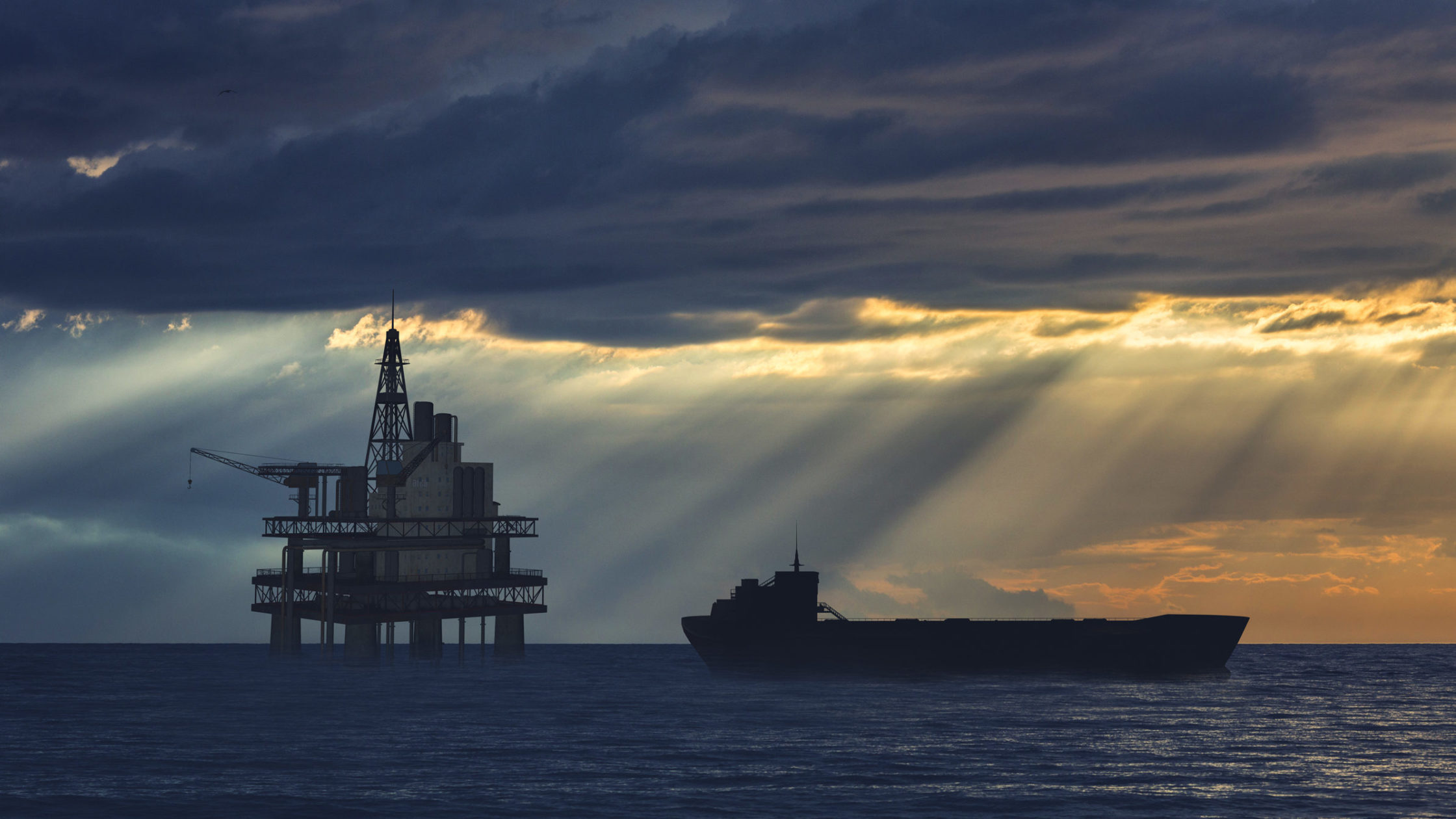To sign up to receive the latest Canadian Energy Centre research to your inbox email: research@canadianenergycentre.ca
Download the PDF here
Download the charts here
Overview
There has been some talk recently that Canada is not in a position to assist Europe, the United States and the rest of the world with their oil and gas needs amid bans on Russian crude oil and natural gas. This is a misleading assertion and ignores the fact that Canadian oil and gas is in fact the medium to long-term solution to providing energy security to Europe, North America and the rest of the world.
In this respect, the International Energy Agency (IEA) points that oil and gas will continue to play a major role in the global economy through 2050, under its most likely (base case) scenario, known as the Stated Policies (STEPS) Scenario.
In this CEC Fact Sheet, we examine key results for oil and natural gas production and demand, drawn from the IEA WEO 2021 Extended Dataset, using the STEPS Scenario. The IEA WEO Extended Dataset provides more detailed data at the global, regional and country level than found in the IEA WEO 2021 main report.
Background on IEA World Energy Outlook (WEO), Stated Policies (STEPS) Scenario
The International Energy Agency (IEA) released its World Energy Outlook, 2021 (WEO 2021) in October 2021. The IEA’s WEO makes use of a scenario approach to examine future energy trends. In WEO 2021, four scenarios are modelled: the Net Zero Emissions by 2050 Scenario (NZE), the Announced Pledges Scenario (APS), the Stated Policies Scenario (STEPS), and the Sustainable Development Scenario (SDS) (IEA, 2021a).
STEPS appears to be a more plausible scenario than the other more aggressive scenarios set out in the WEO 2021. According to the IEA:
STEPS provides a more conservative benchmark for the future because it does not take for granted that governments will reach all announced goals. Instead, it takes a more granular, sector-by-sector look at what has actually been put in place to reach these and other energy-related objectives, taking account not just of existing policies and measures but also of those that are actually under development (IEA, 2021a).
Key Results
The key results of STEPS, drawn from the IEA Extended Dataset, indicate that the oil and gas industry worldwide and in Canada is not going into decline over the next decade. In fact, the demand for oil and gas in emerging and developing economies under STEPS will remain robust right through 2050.
Oil and Natural Gas Production
- World oil production increases from 95.5 million barrels per day (mb/d) in 2019 to 101.4 mb/d in 2035, before falling to 99.9 mb/d in 2050 (see Figure 1).

Source: IEA, 2021(b)
- Canadian oil sands production increases from 3.2 mb/d in 2019 to 3.6 mb/d in 2035, before falling slightly to 3.4 mb/d in 2050 (see Figure 2).
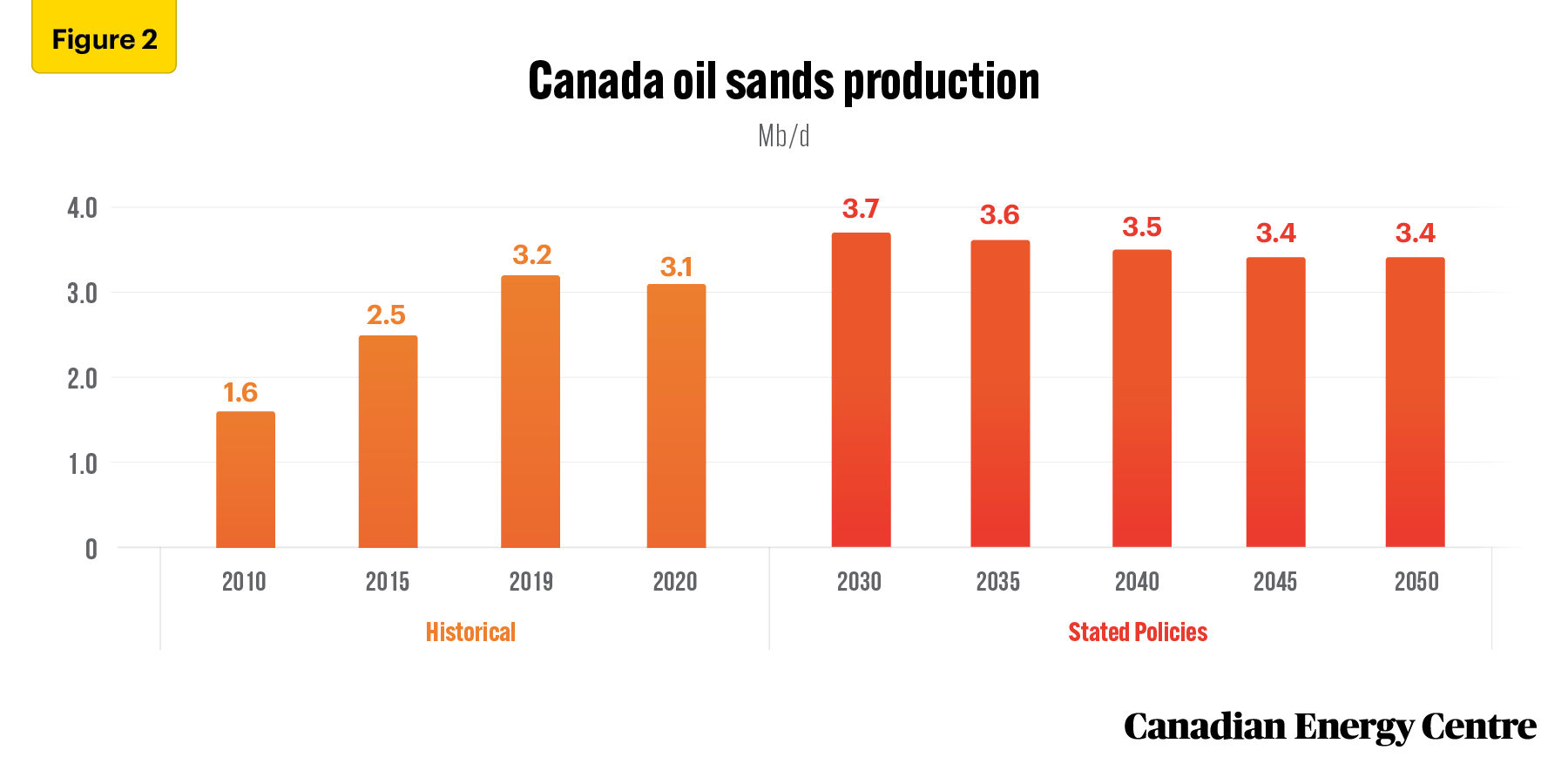
Source: IEA, 2021(b)
- Canadian overall crude oil production increases from 5.6 mb/d in 2019 to 5.9 mb/d in 2035, before falling to 4.9 mb/d in 2050.
- World natural gas production increases from 4,115 billion cubic metres (bcm) in 2019 to 5,113 bcm in 2050 (see Figure 3).
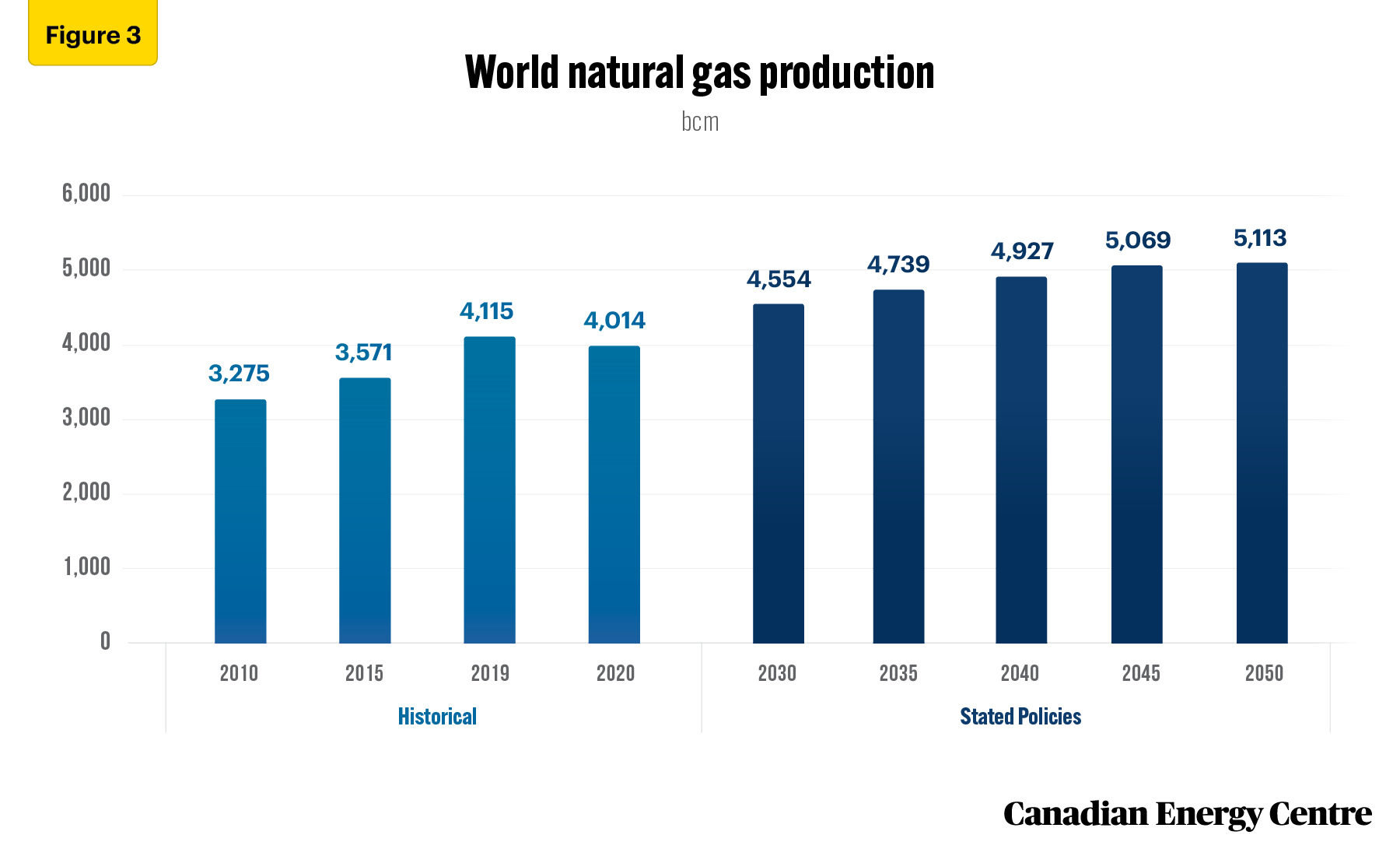
Source: IEA, 2021(b)
- Canadian natural gas production increases from 188 bcm in 2019 to 220 bcm in 2050 (see Figure 4).
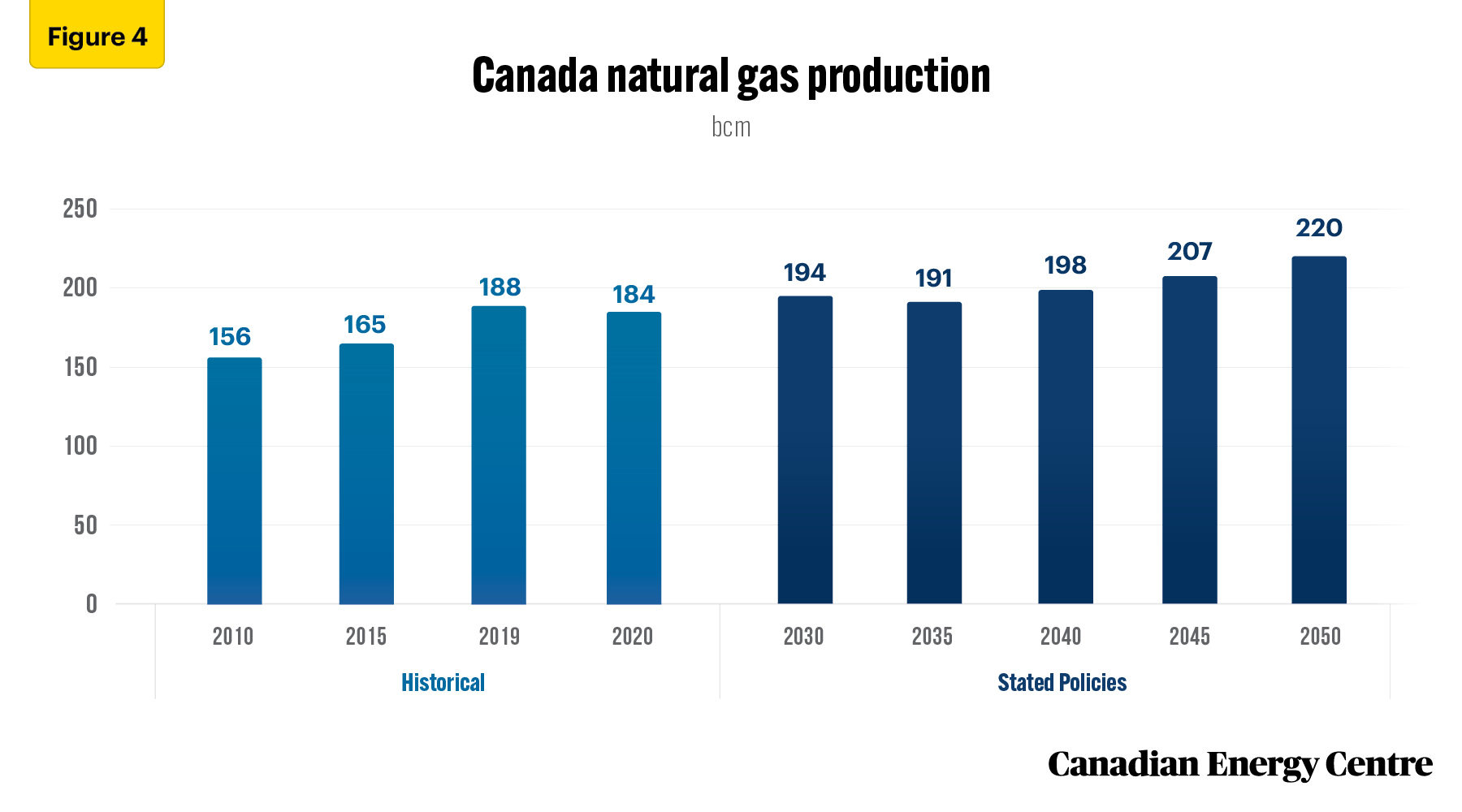
Source: IEA, 2021(b)
Oil and natural gas demand
- World demand for oil increases from 96.6 mb/d in 2019 to 104 mb/d in 2035, before falling slightly to 103 mb/d in 2050 (see Figure 5).
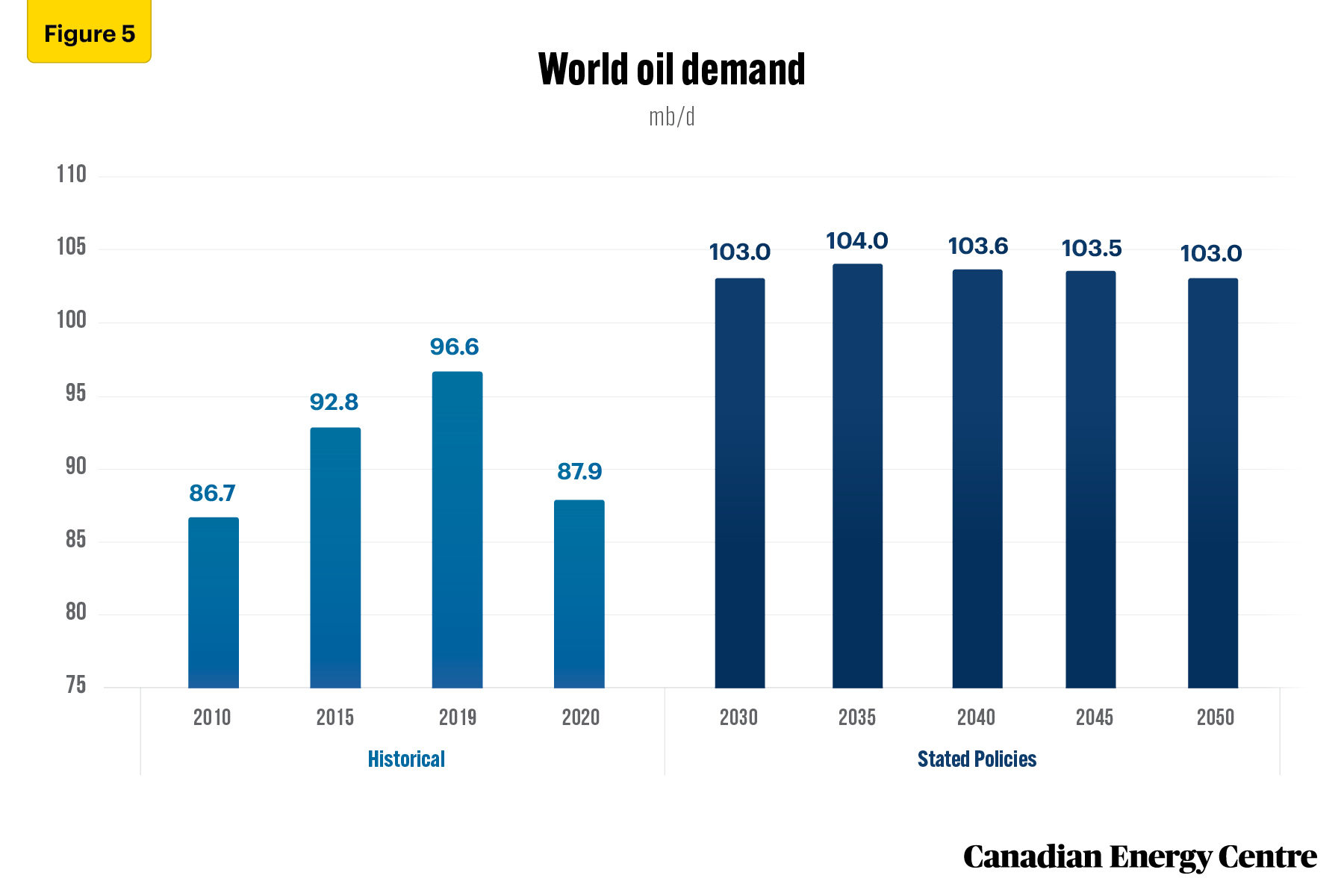
Source: IEA, 2021(b)
- African demand for oil increases from 4 mb/d in 2019 to 8.4 mb/d in 2050.
- Asia-Pacific demand for oil increases from 32 mb/d in 2019 to 38.8 mb/d in 2050.
- Southeast Asia demand for oil increases from 5.1 mb/d in 2019 to 7.7 mb/d in 2050.
- Emerging and developing economies oil demand increases from 45.6 mb/d in 2019 to 63.2 mb/d in 2050 (see Figure 6).

Source: IEA, 2021(b)
- World demand for natural gas increases from 3,999 billion cubic metres (bcm) in 2020 to 5,113 bcm in 2050 (see Figure 7).
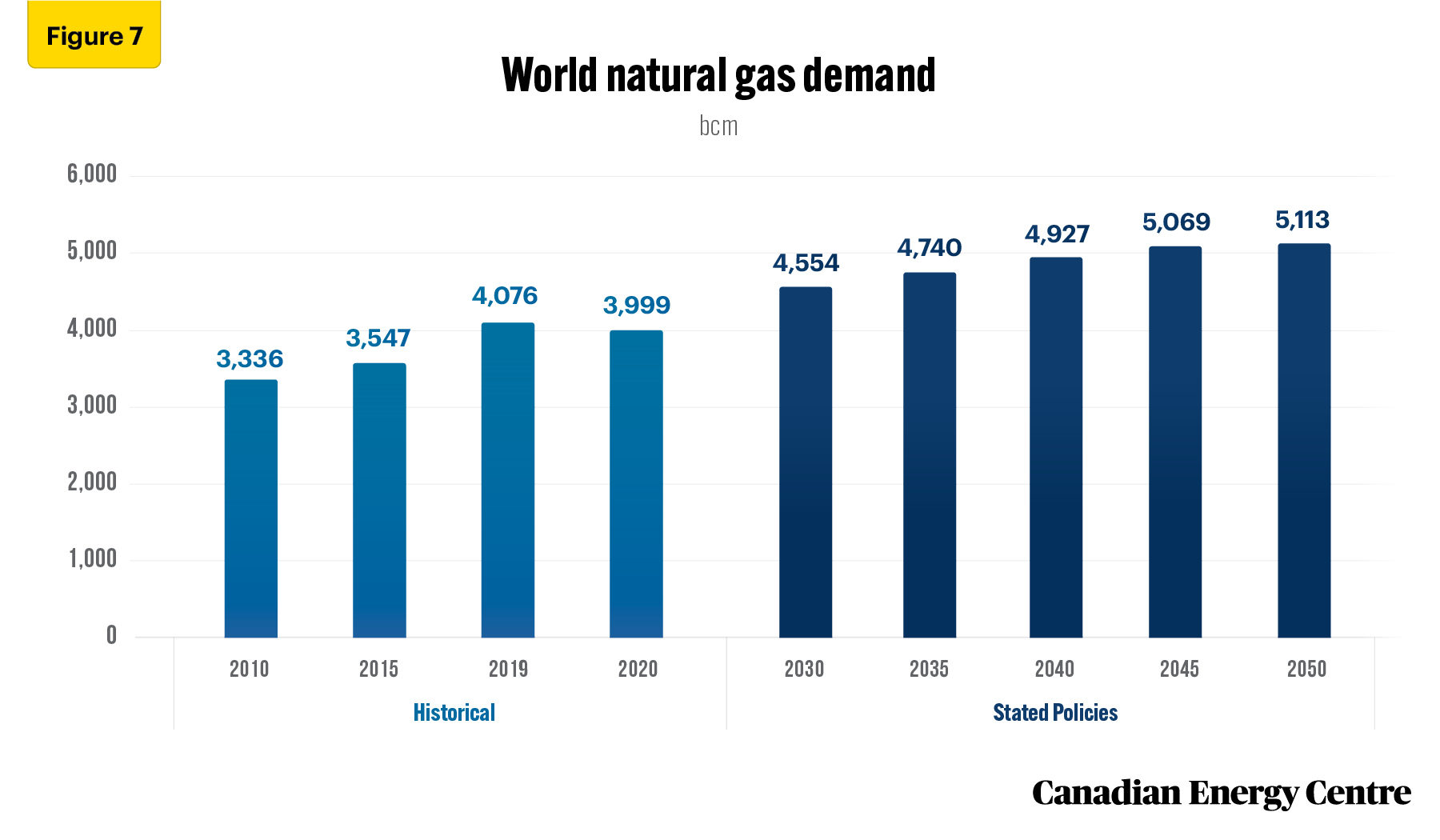
Source: IEA, 2021(b)
- African demand for natural gas increases from 164 bcm in 2020 to 319 bcm in 2050.
- Asia-Pacific demand for natural gas increases from 839 bcm in 2020 to 1,442 bcm in 2050.
- Southeast Asia demand for natural gas increases from 164 bcm in 2020 to 333 bcm in 2050.
- Emerging and developing economies natural gas demand increases from 2,142 bcm in 2020 to 3,394 bcm in 2050 (see Figure 8).

Source: IEA, 2021(b)
Conclusion
Looking sector-by-sector at what measures governments have actually put in place, as well as specific policy initiatives that are under development, i.e., the IEA Stated Policies Scenario (STEPS) shows oil and gas continuing to play a major role in the global economy through 2050. Key data points on production and demand drawn from the IEA 2021 WEO Extended Dataset confirm this trend.
In light of the IEA data, Canada, as a secure and reliable oil and gas supplier, can and must be part of the medium- to long-term solution to meeting the oil and gas demands of the U.S., Europe and other vulnerable nations as part of the movement to energy security in the event of a prolonged ban on Russian crude oil and natural gas.
Despite talk about the potential for increased penetration of renewables such as wind and solar arising from a Russian oil and gas supply squeeze, the IEA WEO 2021 notes that one of the largest challenges with the transition to a net zero economy is mobilizing government investment. In fact, public (government) spending worldwide on clean energy has mobilized less than one-third of the investment required for the transition to net zero, with the largest shortfalls occurring in vulnerable emerging and developing economies. Between 2016-2020, average annual public (government) support for clean energy was $363 U.S. billion globally, and the IEA is projecting that will have to be over $1.2 U.S. trillion globally between 2026 and 2030 to move towards the net zero pathway (IEA, 2021a).
In light of the issues with the transition to net zero, the need for stable energy provided by oil and natural gas is critical to a global economy whose population is set to grow by another 2 billion people by 2050, with rising incomes pushing up demand for oil and natural gas in many emerging and developing economies in Africa, the Asia-Pacific and Latin America, where countries are dealing with increased urbanization and industrialization (IEA, 2021a).
Notes
This CEC Fact Sheet was compiled by Lennie Kaplan at the Canadian Energy Centre (www.canadianenergycentre.ca). The author and the Canadian Energy Centre would like to thank and acknowledge the assistance of Dennis Sundgaard in reviewing the original data and research for this Fact Sheet. Image credits: Diter
References (all links live as of March 4, 2022)
International Energy Agency (IEA), 2021(a). World Energy Outlook. <https://www.iea.org/reports/world-energy-outlook-2021>; International Energy Agency (IEA), 2021(b). Extended Dataset. <https://bit.ly/3D0OdZv>.
Creative Commons Copyright
Research and data from the Canadian Energy Centre (CEC) is available for public usage under creative commons copyright terms with attribution to the CEC. Attribution and specific restrictions on usage including non-commercial use only and no changes to material should follow guidelines enunciated by Creative Commons here: Attribution-NonCommercial-NoDerivs CC BY-NC-ND.
